August Tea Presentation
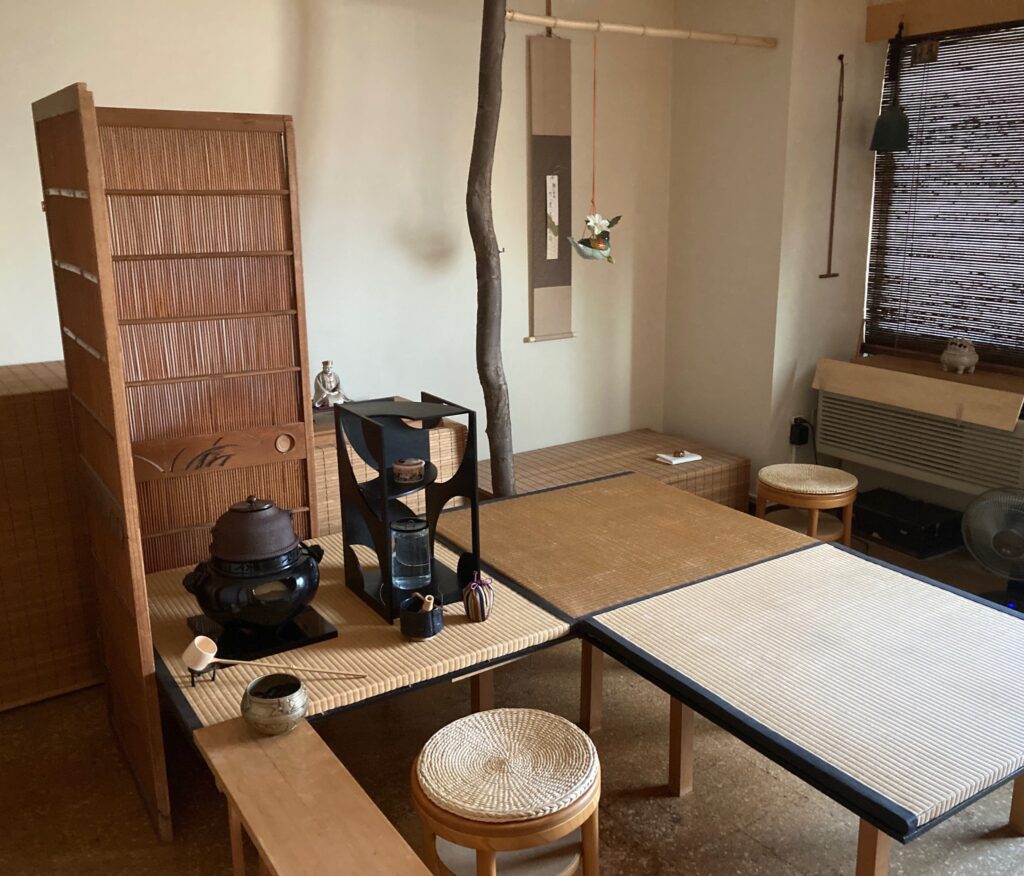
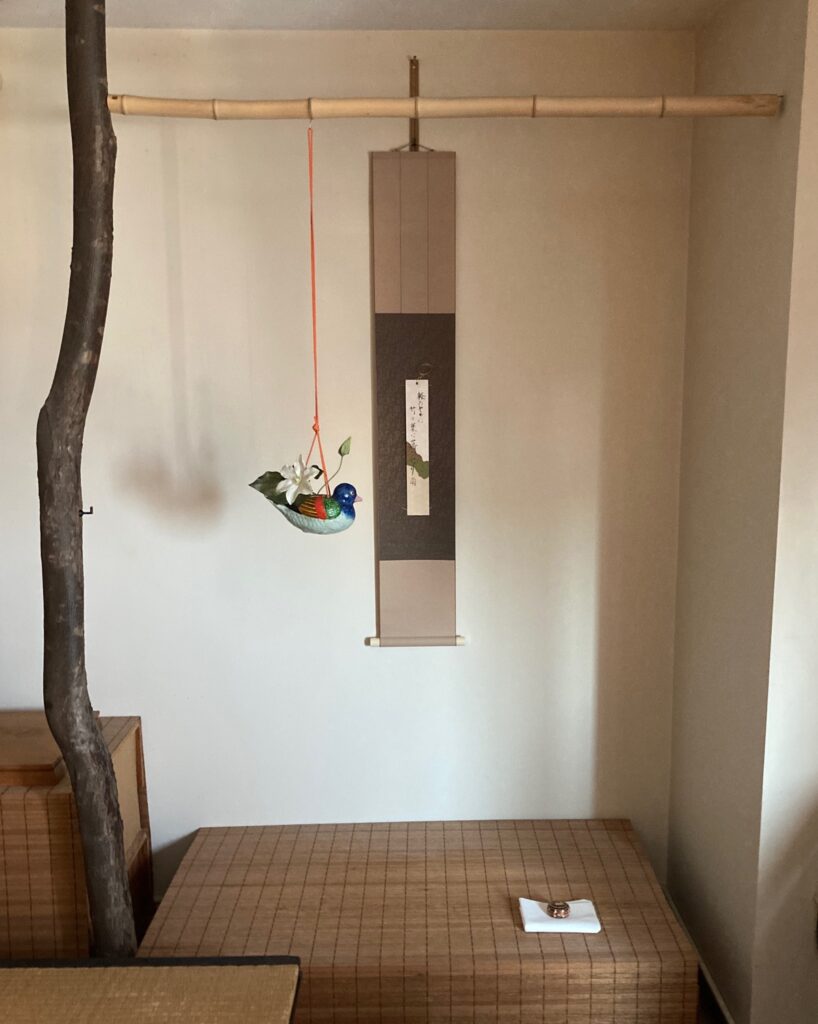
Ga-ran-dō, 伽蘭洞, Attend-orchid-cave, tokonoma. Kake-mono, 掛物, hang-thing, tan-zaku, 短冊, short-volume, temporarily mounted on paper and fabric hanging scroll, tan-zaku kake, 短冊掛, short-volume hang. Tsuri-hana-ire, 釣花入, suspend-flower-receptacle, in the form of a bird. Kō-gō, 香合, incense-gather, displayed on a pack of kami kama-shiki, 紙釜敷, paper-kettle-spread. The toko-bashira, 床柱, floor-post, is the trunk of a katsura tree, 桂, Cercidiphyllum magnificum, with the bark intact.

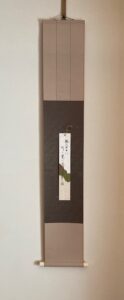
Left: tan-zaku, 短冊, short-volume, decorative pasteboard with calligraphy:
karoyaka ni take no ha ni otsu ni tanabata u, 軽やかに竹の葉に落ち七夕雨, lightly on bamboo leaves falls Seven Night rain; 2 x 12 sun kane-jaku.
Right: tan-zaku-kake, 短冊掛, short-volume-hanger, paper and fabric scroll with threads at the corners to hold a tanzaku; L. 4.5 shaku kane-jaku, or 3.6 sun kujira-jaku. The scroll is hung on go-ma-dake ji-zai, 胡麻竹自在, foreign-hemp bamboo self-exist, with slidable metal hook.
The take ji-zai, 竹自在, bamboo self-exist, hanger may evoke the ta-ke-ji-zai-ten, 他化自在天, other-change-self-presence-heaven, which is the Buddhist heaven of controlling others’ emanations. Takejizaiten is a Buddhist concept that is an important part of the nature of existence, and is the sixth of the Roku-yoku-ten, 六欲天, Six-desire-heaven, Dai-ji-zai-ten, 大自在天, Great-other-change-self-presence-heaven, is a name of Shiva, who is one of the three great deities of the Hindu Trinity. These supreme deities are Brahma – the creator, Vishnu – the preserver, Shiva – the destroyer.
Held in August, Tana-bata, 七夕, Seven-night, is a lunar observance held on the 7th night of the lunar 7th month. In modern Japan, Tanabata is celebrated on July 7th. In some parts of more traditional Japan, Tanabata is celebrated on August 7th, while even more traditionalists in some places observe Tanabata on the 7th night of the 7th lunar month. In 2023, the lunar Tanabata occurs on August 22nd.
The Buddhist deity that has their En-nichi, 縁日, Edge-day, on the 7th of each month is Sen-jū Kannon Bosatsu, 千手観音菩薩, Thousand-hand See-sound Grass-buddha. In the Tearoom, Kannon who is located in the north, is identified with the tokonoma.
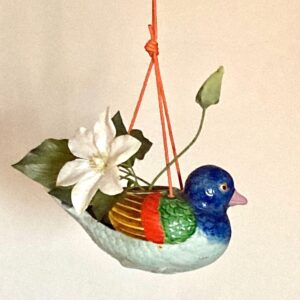
The constellations that are the setting for Tanabata, 七夕, Seven-night, are birds. The Summer Triangle is composed of Altair, Vega, and Deneb, and are identified with the star lovers Ori-hime, 織姫, Weave-princess, and Hiko-boshi, 彦星, Boy-star. Orihime is identified with Vega, the brightest star in the northern constellation of Lyra. Altair is identified with is the brightest star in the constellation Aquila, the Eagle. The third star of the Summer Triangle is Deneb, which is a star in the constellation, Cygnus, the Swan. In the Asian story, Deneb is identified with a bridge across the Milky Way formed of magpies, kasasagi, 鵲, which provides a place for the lovers to meet on the seventh night of the seventh moon. The Kanji for kasasagi is composed of mukashi, 昔, long ago, and tori, 鳥, bird.
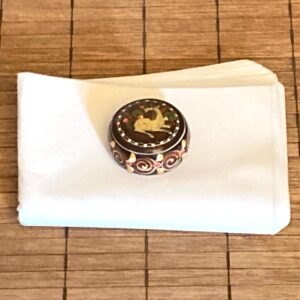
The fast horse, uma, 馬, is the hoped-for vehicle for souls coming from heaven to their ancestral homes for O-bon, お盆, Hon.-tray. The vehicle for souls returning to paradise is slow ox, ushi, 牛.
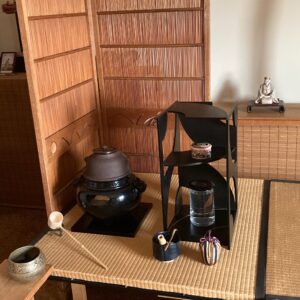
Cha-dō-gu, 茶道具, tea-way-tools. Bronze ki-men bu-ro, 鬼面風炉, demon-face wind-hearth, and iron kama, 釜, kettle. ‘Ha-ssen dana’, 八扇棚, Eight-fan shelf. Glass mizu-sashi, 水指, water-indicate. Ceramic cha–ki, 茶器, tea-container. Cha-ire, 茶入, tea-receptacle in its fabric shi-fuku, 仕覆, serve-cover. Ceramic cha–wan, 茶碗, tea-bowl, with bamboo cha-shaku, 茶杓, tea-scoop, bamboo cha-sen, 茶筅, tea-whisk, and hemp cha-kin, 茶巾, tea-cloth (in bowl). Bamboo hi-shaku, 柄杓, handle-ladle, resting on bronze go-toku futa-oki, 五徳蓋置, five-virtue lid-place. Brass ken-sui, 建水, build-water. The folding screen is a hinged pair of sliding panels called su–do, 簾戸, reed screen-door, made of reeds and cedar frame. Such panels replace fusuma, 襖, sliding wall panel, and shō-ji, 障子, hinder-of, in summer to let in cool breezes.
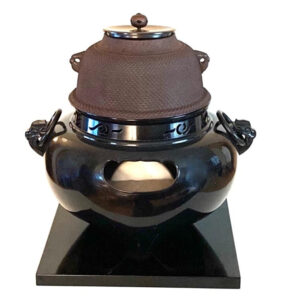
The esthetic relationship between the elegant refinement of the furo and the rustic worn kama may be identified as wabi, 侘び. The furo is placed on a black-lacquered wooden shiki-ita, 敷板, spread-board, used to protect tatami from the heat of the fire in the furo.
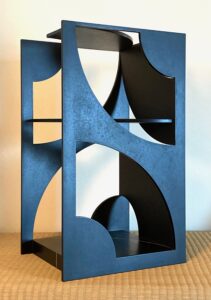
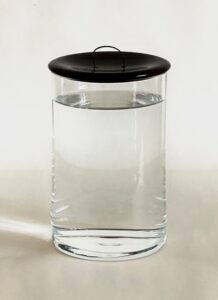
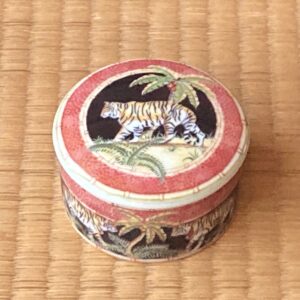
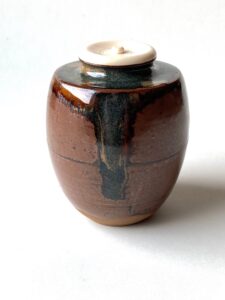
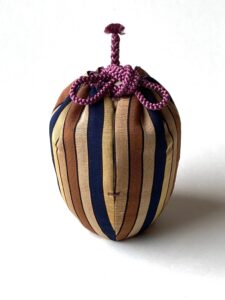
Cha-ire, 茶入, tea-receptacle; ceramic jar, kata-tsuki, 肩付, shoulder-thrust, with clear brown glaze, Taka-tori-yaki, 高取焼, High-take-fired; H. 2.8 sun kane-jaku. by Kame-i Raku-zan, 亀井 楽山, Tortoise-well Pleasure-mountain, Fuku-oka-shi, 福岡市, Fortune-hill-city, Kyū-shū, 九州, Nine-states. Shi-fuku, 仕服, service-clothe, drawstring silk bag with pattern named ‘Ao-ki kan-tō’, 青木間道, Green-tree Interval-way.
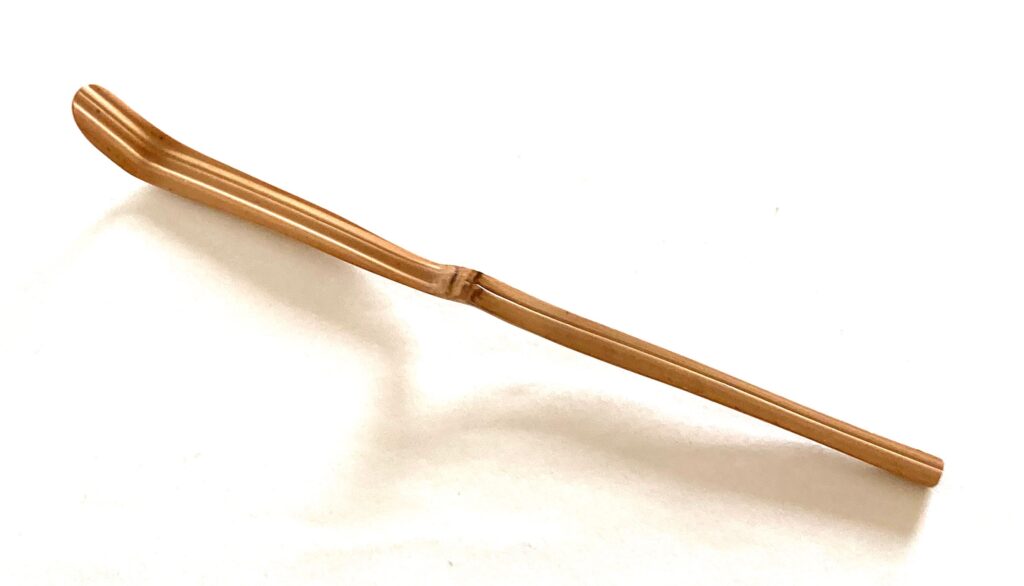
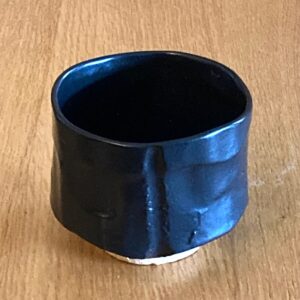
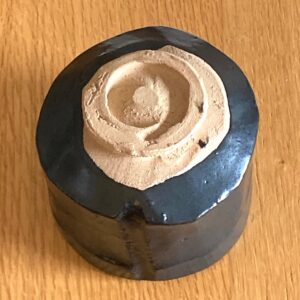
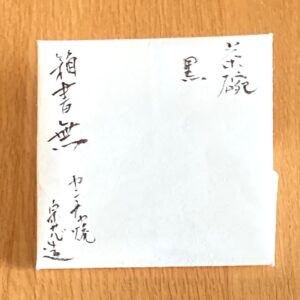
Bottom of Shiotsuki chawan with her sign ‘tsuki’, 月, moon. Paper cover for box of Shiotsuki chawan, with writing by her eldest daughter, Kuma-gai E-mi-ko, 熊谷栄美子, Bear-valley Splendor-beauty-child.
Writing from upper right: “cha wan hako gaki nashi yancha yaki sō shin,” 茶碗黒箱書無ヤンチヤ焼宗芯, tea bowl black box write nothing Yancha fired Sect-wick. Yancha is a pet name of Shiotsuki Sama. Shiotsuki Yaeko was the first-born child in the Urasenke family, and would have been heir to the title Iemoto, just as her first born child, Emiko, would have been heir to the title.
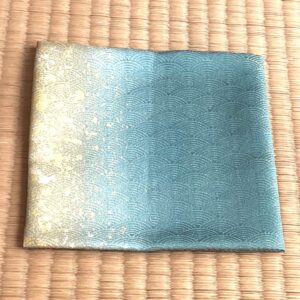
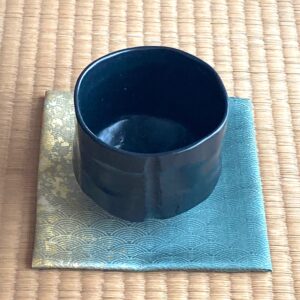
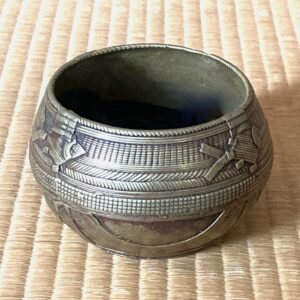
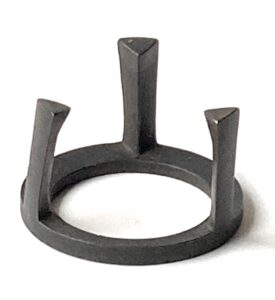
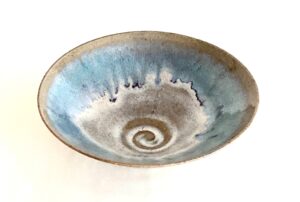
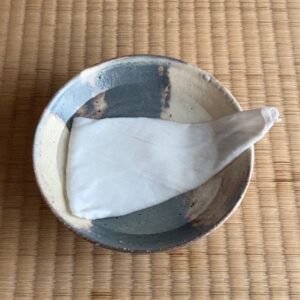
When preparing for the Tea presentation called, arai-ja-kin, 荒い茶巾, rough tea-cloth, a shallow, hira ja-wan, 平茶碗, wide tea-bowl, is half-filled with water. The triangular chakin is taken from the tarai, and laid, as-is, in the water-filled bowl, with the pointed ends projecting slightly over the right rim of the bowl. The bamboo cha-sen, 茶筅, tea-whisk, and the bamboo cha-shaku, 茶杓, tea-scoop, are place on the chawan in the usual way. When carrying the bowl prepared in this manner, must be held with both hands. [See Chanoyu Decoded July 2023.]
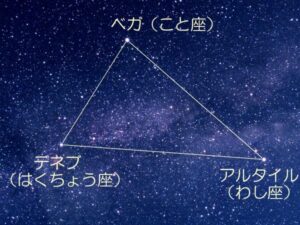
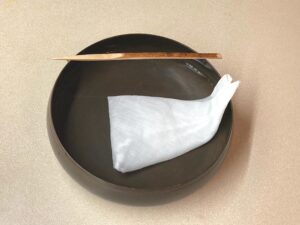
The Summer Triangle in Japanese is the Natsu no Dai–san-kaku, 夏の大三角, Summer’s Great-three-corner. At the top of the diagram above, the star is Vega, ベガ, in the constellation of Koto-za, こと座, Zither-seat. The star at the lower left is Deneb, デネブ, in the constellation of Haku-chō–za, はくちょう座, White-swan seat. The star at the lower right is Altair, アルタイル, in the constellation of Aquila, Washi-za, 鷲座, Eagle-seat.
The Kanji tarai, 盥, is composed of Kanji for mizu, 水, water, between two hands, te, 手, over a sara, 皿, bowl.
Arai-ja-kin, 荒い茶巾, rough tea-cloth, the chakin is folded in half diagonally, then in half , then in half again to form a triangle, san-kaku, 三角, three-corners. The chakin is laid in the chakin tarai, 茶巾盥, tea-cloth basin, that is half-filled with water. The pointed tips of the chakin should extend above the rim of basin so that it does not empty the water through capillary action.
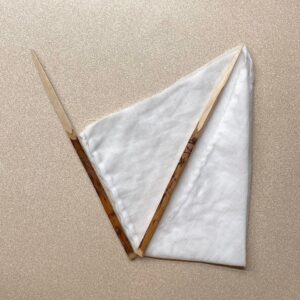
The cha-kin darai, 茶巾盥, tea-cloth basin, in the mizu-ya, 水屋, water-room, is half-filled with water specifically for making the chakin wet. The only other utensil that is specifically associated with the chakin darai is the kuromoji, which is also made wet before use. I wondered if there was some connection between the chakin and the kuromoji.
The cha-kin, 茶巾, tea-cloth, is 5 x 10 sun kane-jaku, and the kuro-mo-ji, 黒文字, black-letter-character, is 6 sun kane-jaku. When preparing the chakin, it is folded in half diagonally, then folded in half again bringing the pointed ends together. Seeing the kuromoji in the chakin tarai, I wondered if it had any connections with the chakin. Curious, I thought that their lengths might be related, so I placed the kuromoji on the folded chakin, and was stunned to see that they were the same. Further investigation revealed that the area of bark was equal one of the sides of the chakin. This came as a complete surprise after fifty years of studying Chanoyu.
For further study, see also: Tea in August, Tea in July, August Seasonal Aspects, Cha 茶月Tsuki, Obon at Night

